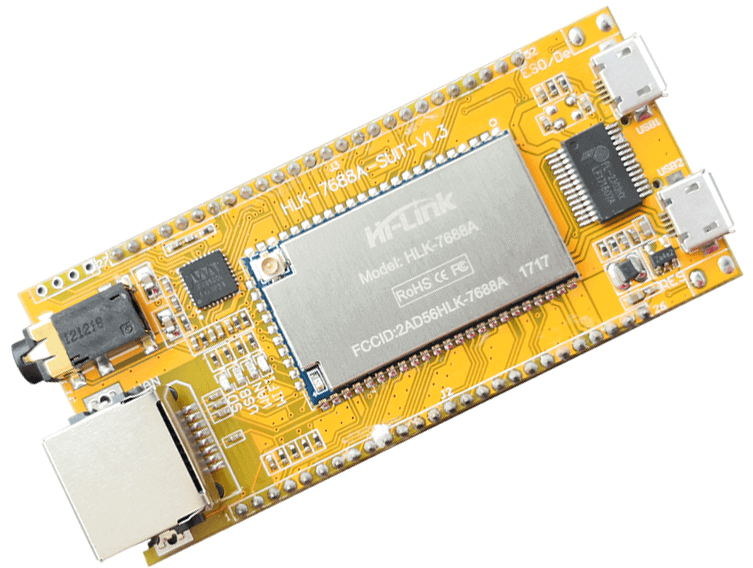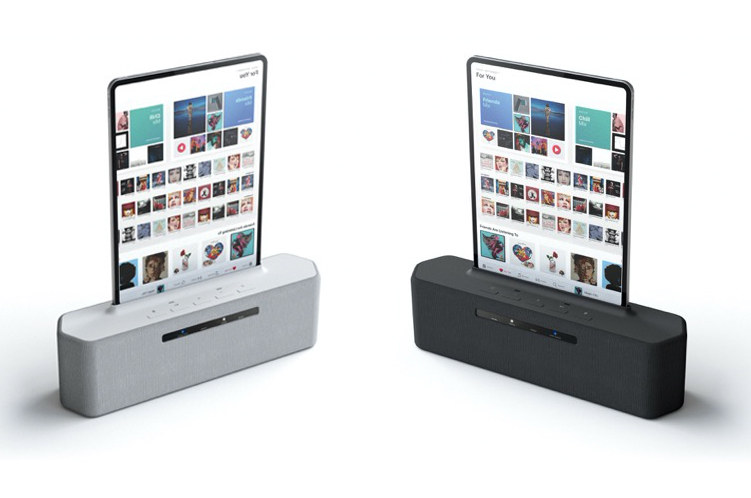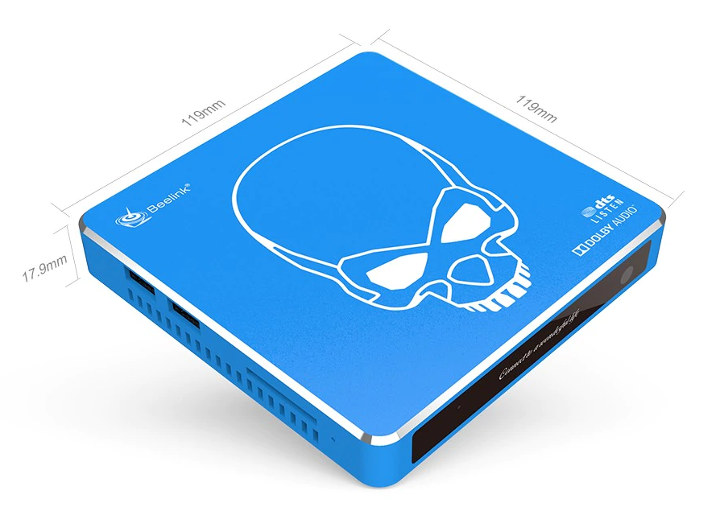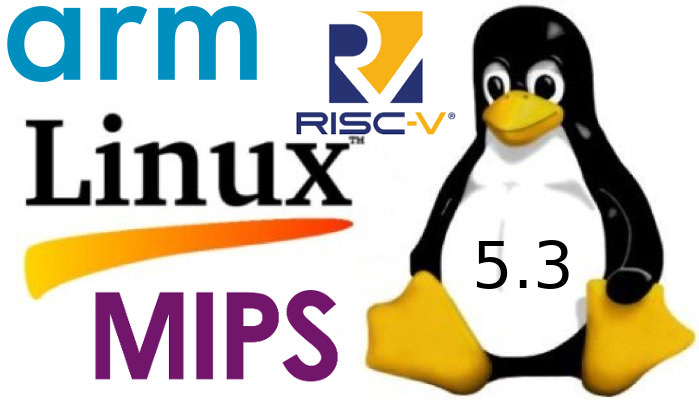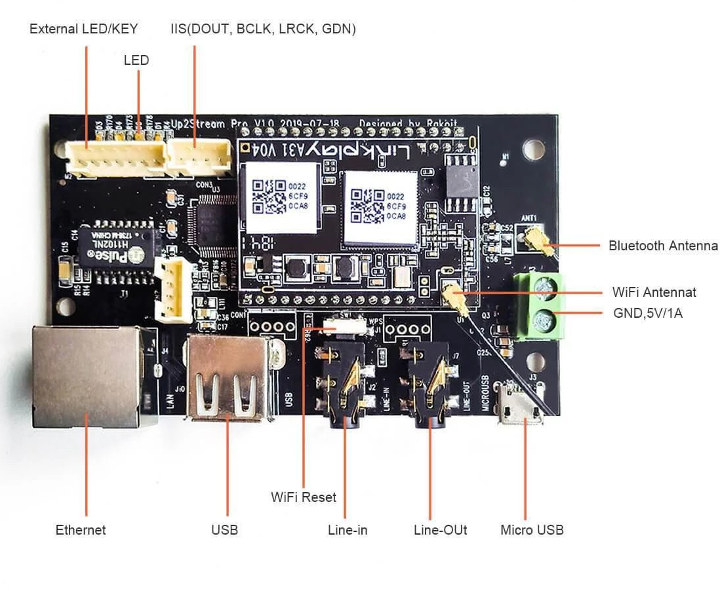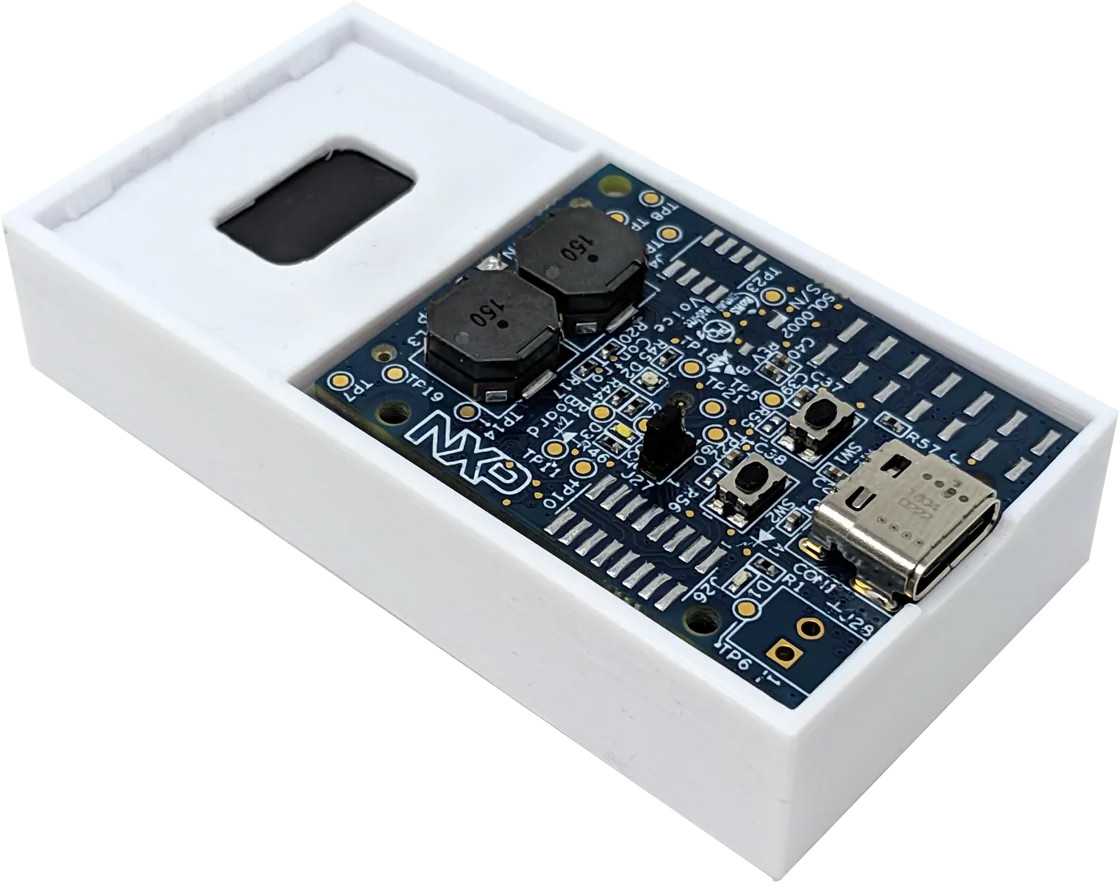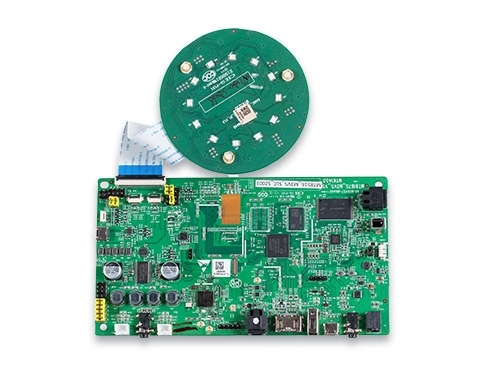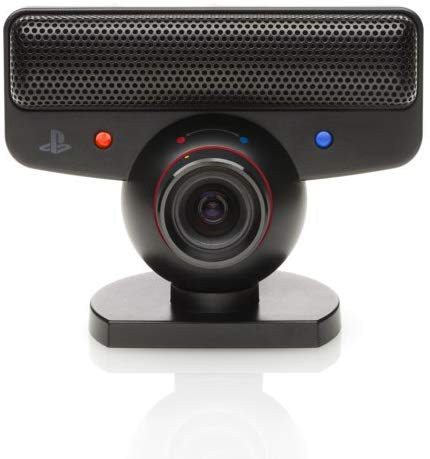We first tested MediaTek MT7688 MIPS processor in Mediatek Labs’ LinkIt Smart 7688 / 7688 Duo hardware development kits running OpenWrt in 2015 with the boards having a focus on IoT applications. A year later, Widora NEO board launched with an audio jack for connected audio applications, but AFAIK it’s not available anymore. There’s now another OpenWrt audio board based on the processor with HLK-7688A board featuring Hi-Link HLK-7688A module which we previously found in MatchBox LoRaWAN gateway. HLK-7688A board specifications: Wireless Module – HLK-7688A based on MediaTek MT7688 MIPS24KEc processor @ 580 MHz, and equipped with 128MB RAM, 32MB flash Storage – MicroSD card slot Connectivity 802.11 b/g/n WiFi 4 up to 150 Mbps with u.FL antenna connector 10/100M Ethernet Audio – 3.5mm audio jack; 4-pin speaker header, WM8960 audio codec USB – 2x Micro USB ports one USB 2.0 port and one for debugging & power Expansion – […]
Rockchip RK2108 Smart Audio Dock Converts Tablets into Smart Displays
Last April, Rockchip published a roadmap to 2020 with processors such as RK3588 Cortex-A76/A55 or RK3530 quad-core Cortex-A55 SoCs. Part of the roadmap was also Rockhip RK2108 Arm Cortex-M4 microcontroller with an Audio DSP which did not get as much coverage. The company has now announced RK2108 based smart docks that convert tablets into smart display / speakers so that they can be waken-up and controlled by voice commands. Rockchip RK2108 audio MCU supports A/D audio interface, MIPI DSI/MCU LCD interface and USB2.0 interface, and comes with the following key features: Built-in audio DSP for voice/audio signal processing Audio pre-processing, active noise reduction, AEC, etc… for improved voice recognition Customizable wake-up words and offline instructions Ultra-low power consumption in both standby and operating modes The RK2108 smart dock pictured above connects to compatible Android tablets over USB or Bluetooth, and turns those into smart display products that can handle voice […]
Beelink GT-King Pro Android TV Box Features Amlogic S922X-H Processor with Dolby and DTS Licenses
Amlogic offers variants of their processors depending on whether they come with Dolby and/or DTS licenses. For example, we’ve recently seen Amlogic S922XJ with Dolby license only for the upcoming MINIX NEO N22XJ TV box. Beelink has used another variant, namely Amlogic S922X-H, with both Dolby and DTS licenses in their GT-King Pro TV box as an upgrade to their Beelink GT-King TV box which Karl reviewed a few weeks ago. Beelink GT-King Pro specifications: SoC – Amlogic S922X-H hexa-core big.LITTLE processor with 4x Arm Cortex A73 cores @ up to 2.21 GHz, 2x Arm Cortex A53 cores @ 1.8 GHz, Arm Mali-G52MP6 GPU; 12nm manufacturing process System Memory – 4GB LPDDR4 RAM Storage – 64GB eMMC flash, SD card slot Video Output – HDMI 2.1 up to 4K @ 75 Hz Video – AVE-10 engine with 4K UHD H.265/VP9/AVS2 video decoding up to 60 fps, Dolby Vision, Advanced HDR10, […]
Linux 5.3 Release – Main Changes, Arm, MIPS & RISC-V Architectures
Linus Torvalds has just announced the release of Linux 5.3: So we’ve had a fairly quiet last week, but I think it was good that we ended up having that extra week and the final rc8. Even if the reason for that extra week was my travel schedule rather than any pending issues, we ended up having a few good fixes come in, including some for some bad btrfs behavior. Yeah, there’s some unnecessary noise in there too (like the speling fixes), but we also had several last-minute reverts for things that caused issues. One _particularly_ last-minute revert is the top-most commit (ignoring the version change itself) done just before the release, and while it’s very annoying, it’s perhaps also instructive. What’s instructive about it is that I reverted a commit that wasn’t actually buggy. In fact, it was doing exactly what it set out to do, and did it […]
Up2Stream Pro HiFi Audio Receiver Board Streams Audio over WiFi, Bluetooth, Ethernet, or USB
Last December, we wrote about Up2Stream WiFi audio module designed for people wanting to build their own DIY wireless speakers. The module is based on MediaTek MT7688AN MIPS processor with 64MB DDR2 and 16MB flash storage The module also comes with a small baseboard allowing for an easier connection to speakers. The company has now introduced Up2Stream Pro model based on the same module, but with a baseboard adding more features including Bluetooth, Ethernet, USB, and audio jacks. Up2Stream Pro key features and specifications: Audio Output – 3.5mm AUX jack and I2S header Input – 3.5mm AUX-in SNR: 91db THD: 0.03% Sample rate – 24bit up to 192kHz FLAC, Wav, and APE codec supported, but NOT SBC, APT-X, APT-X HD, or LDAC. Multiroom & Multizone support EQ control Connectivity – Ethernet, WiFi, and Bluetooth 5.0 Streaming Protocols – Airplay, DLNA, UPnP, Spotify Connect Compatible Services – Spotify, Deezer, Tidal, Qobuz, […]
NXP i.MX RT106F & RT106A/L Cortex-M7 Processors Target Offline Face Recognition & Smart Audio Applications
NXP i.MX RT crossover processors combine real-time capabilities of microcontrollers with the performance of application processors thanks to an Arm Cortex-M7 core clocked at 528 MHz and more. The performance is indeed impressive as shown by Teensy 4.0 benchmarks, but so far NXP i.MX RT processor targeted general purpose applications. The company has now introduced three new crossover processors designed for AI applications. NXP i.MX RT106F is designed for offline face recognition and expression Identification, while RT106L and RT106A are made for local and cloud-based embedded voice applications. NXP i.MX RT106F Processor Highlights of the processor: CPU – Arm Cortex-M7 @ 600 MHz (3020 CoreMark/1284 DMIPS) Memory – 1 MB On-Chip SRAM plus up to 512 KB configurable as Tightly Coupled Memory (TCM) External memory interface options – NAND, eMMC, QuadSPI NOR Flash, and Parallel NOR Flash Real-time, low-latency response as low as 20 ns Industry’s lowest dynamic power with […]
MediaTek MT8516 2-Mic Development Kit is Designed for Alexa Voice Service (AVS)
MediaTek has just announced the MT8516 2-mic development kit for Alexa Voice Service (AVS) that aims to help developers build voice-assistant products faster, at reduced costs, and with advanced features such as multi-room music (MRM). The kit is based on MT8516 quad-core ARM Cortex-A35 application processor, which integrates audio front-end and post-processing technologies, as well as Wi-Fi and Bluetooth connectivity. MediaTek MT8516 2-mic development kit specifications: SoC – MediaTek MT8516 quad core Cortex-A35 processor @ 1.3 GHz System Memory I/F – LPDDR2, DDR3, LPDDR3, DDR3L Video Output – HDMI 1.4 with ARC Audio 2x DMIC Amazon Alexa support MediaTek PowerAQ Multi-Room Audio 2x 4-channel I2S S/PDIF TDM in/out up to 8 channels 2-channel PDM inputs 2-channel audio DAC and DAC Connectivity – Fast Ethernet, WiFi 4, Bluetooth 4.2 LE USB – 1x micro USB 2.0 OTG port MediaTek MT8516 supports the following technology components, although note that a license […]
Using Sony PS3 Eye Camera as an Inexpensive Microphone Array
Almost exactly two years ago to the day, we published an article showing how microphone arrays performed against a single USB microphone, and the latter started to have a poor wake word detection success rate at around 3 meters array even in a silent room, and it got worse with white noise or background music, while the microphone arrays would pick up the wake word with a much higher success rate in all conditions. The price of smart audio development kits varies a lot from $500 for Intel Speech Enabling Developer Kit to $129 for an Allwinner R18-based 3-Mic Far-Field Amazon AVS Development Kit, and $99 for ReSpeaker Core v2. If you’ve already got a Raspberry Pi 3/4 board, you can get cheaper options such as ReSpeaker 4-Mic Array for $25, but nothing beats the price of Sony PS3 Eye camera that comes with a 4 microphone array and sells […]


